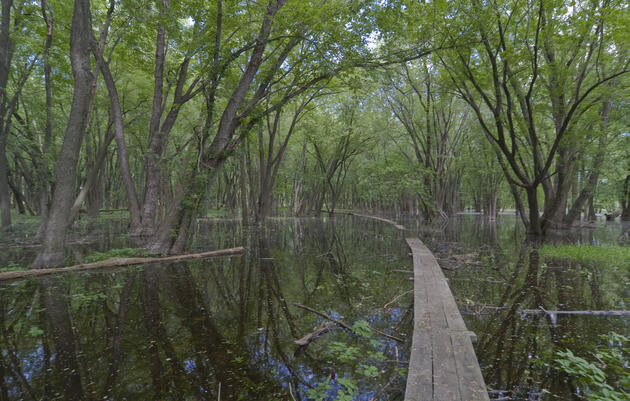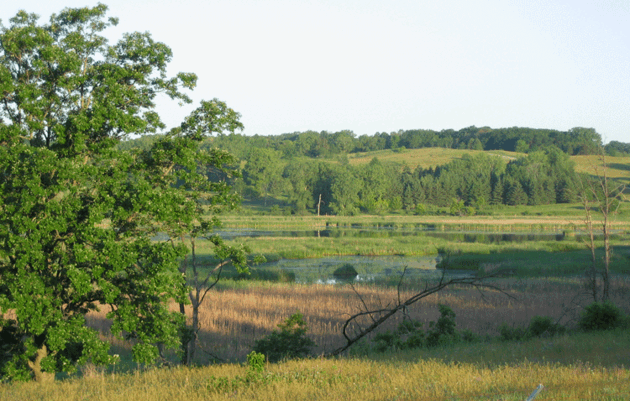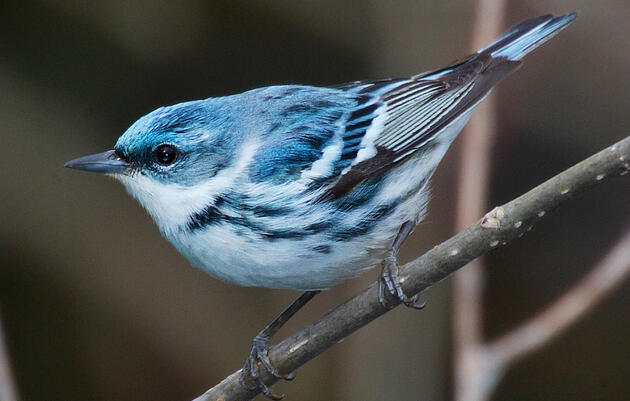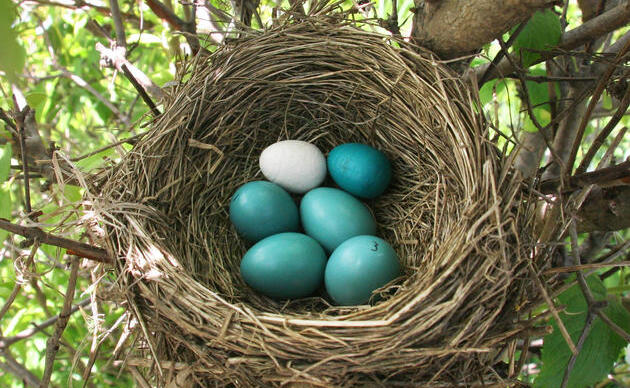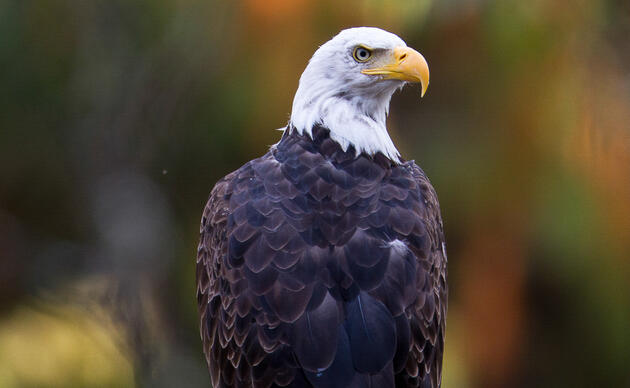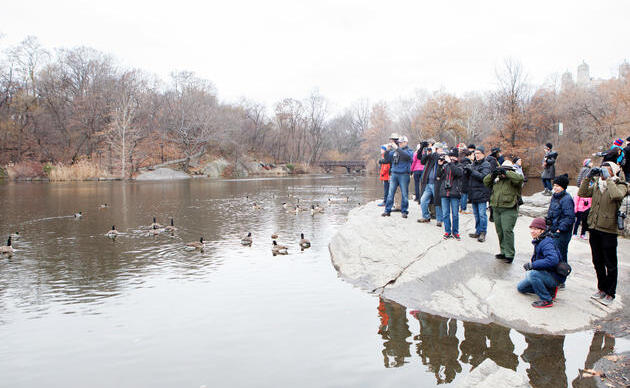Restoring Floodplain Forests
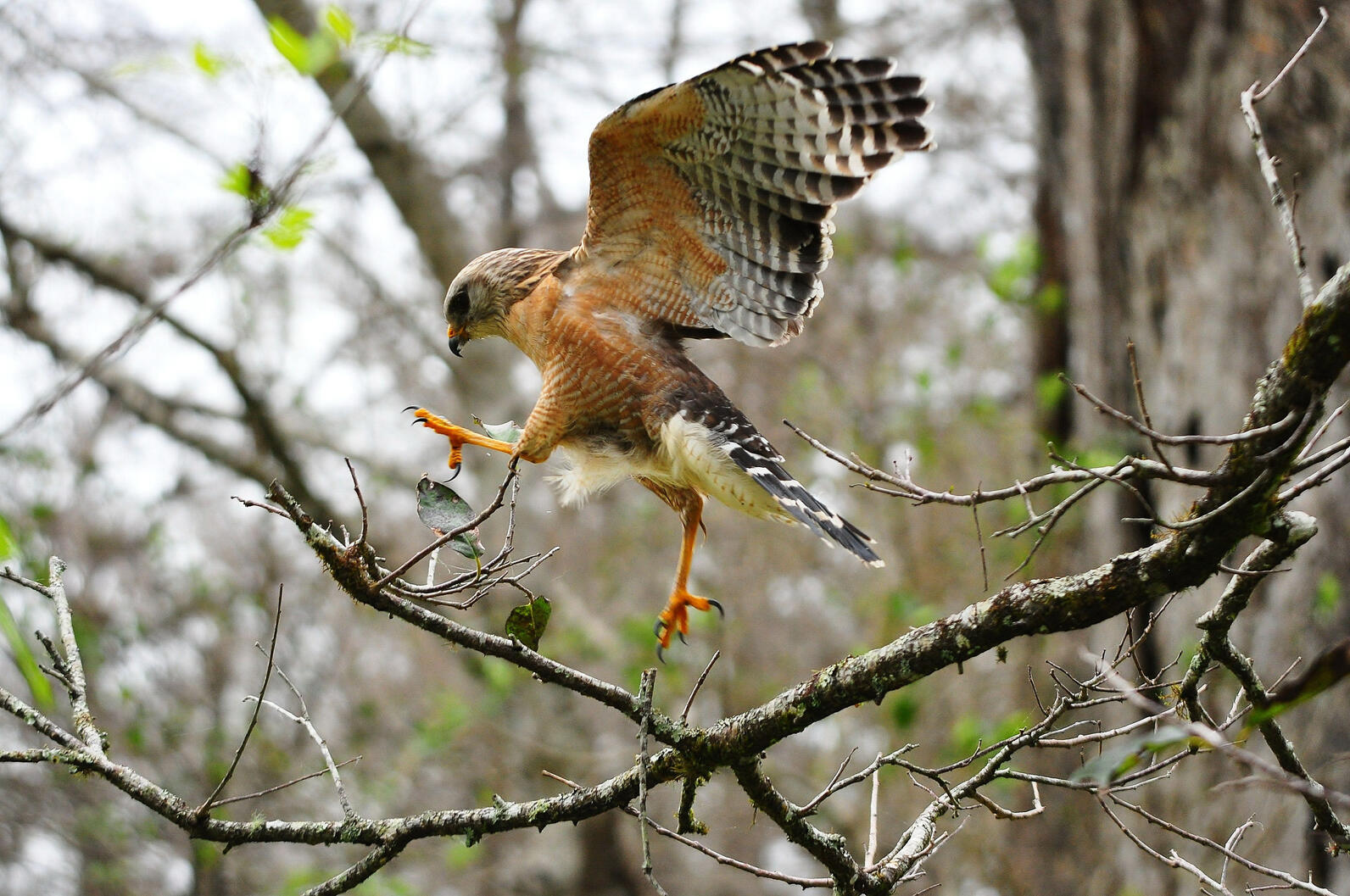
Many species of birds, including the golden Prothonotary Warbler, the secretive Red-shouldered Hawk, and the sweet-melodied Cerulean Warbler make their nests in floodplain forests. Along the Upper Mississippi River, these forests are under threat. Locks and dams create artificially high water levels, and invasive species prevent the natural regeneration of trees. If action is not taken now, much of the existing forest could convert to reed canary grass, an aggressive invasive plant that provides no habitat for forest-dependent birds.
- Audubon has a full-time “boots on the ground” Forest Ecologist who is working with partners to implement restoration projects.
- We are completing restoration projects by controlling invasive species and planting trees.
- We are advancing the science around floodplain forest restoration and its effects on birds by working with partners to evaluate restoration methods.
With your help we can continue this important research, restore hundreds more acres each year, and maintain the technical expertise needed for this important work. Donate today or learn more about the important work we're doing to improve water quality and to restore and protect bird habitat below.
Audubon Upper Mississippi River Floodplain Forest Projects:
- Gores Wildlife Management Area
- Collischan Bottoms South
- Collischan Willow Project
- Duke's Pond
- East Indian Creek
- LCCMR Study Sites
- North Clear Lake
- Reno Bottoms
- Richmond Island
- Root River
- Turkey River Bottoms (Iowa)
- Vermillion Bottoms and Lower Cannon River IBA
- Wabasha Bottoms
- Whalen
- Whitewater Delta
- Whitewater DNR
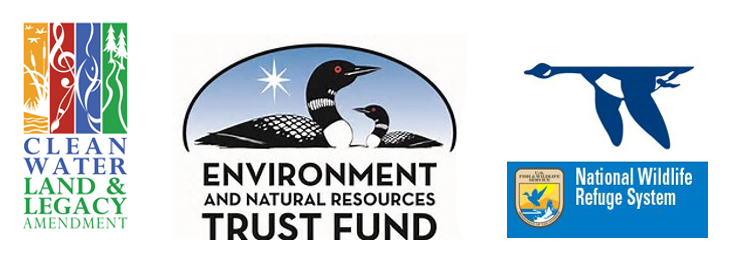
Mississippi River Floodplain Forest Restoration made possible by:
Clean Water Land and Legacy funding is used for project implementation, including site preparation, controlling invasive species, purchasing and planting trees, and post planting weed control. Up to 20% of the grant is used for professional staff time to coordinate and implement projects.
Environment and Natural Resource Trust Fund is used to conduct the LCCMR study of reed canary grass control and tree regeneration methods. The research portion is sub-contracted to the University of Minnesota and University of Wisconsin – La Crosse. Approximately 20% is used for Audubon professional staff time to coordinate the project and implement the restoration treatments.
US Fish and Wildlife Service – Upper Mississippi National Wildlife and Fish Refuge funding is used to cost share salary for Audubon’s professional Forest Ecologist position. This position oversees forest restoration projects within the National Wildlife Refuge and on other public lands along the Upper Mississippi River.
Related
Saving Floodplain Forests
Cavity-nesting birds rely on floodplain forests along rivers to thrive


